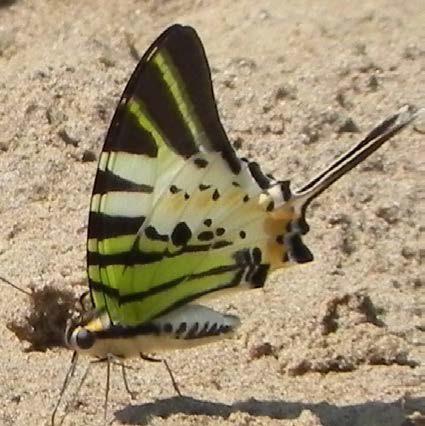Sanjay Talukdar
Assam, in northeast India, has a very high diversity of butterflies, much of which is poorly documented. This project seeks to identify and map ‘Prime Butterfly Areas’ – sites of importance for butterfly conservation, by (1) generating information on the butterfly diversity of key protected areas and (2) identifying conservation-dependent species in order to set priorities for future conservation action.

Great nabab.
The northeast Indian state of Assam is situated within the Indo-Burma global biodiversity hotspot and is an area of significant conservation importance. Whilst vertebrate fauna of the region has been fairly well documented, little are known about the invertebrates and which sites are important for their conservation in the region. 600-700 species of butterflies are believed to occur in Assam, but information on their current status and distribution is lacking.

Five bar swordtail.
Very little is known about the seven species that are endemic / near-endemic to the state (see Table 1.doc, below), species that may be of conservation priority if proper assessments are done. Basic information such as inventories of butterflies in different protected areas is lacking and few systematic efforts to generate information are underway.
There has been an increasing loss of forest cover in Assam in the recent past, and this might adversely affect populations of these endemics. Proactive efforts to conserve butterflies in the region are needed. Identifying conservation-dependent species and mapping ‘Prime Butterfly Areas’ where conservation efforts should be targeted are necessary as a first step toward meeting this goal.
The objectives of this project are:
(1) To generate information on the butterfly diversity of protected areas in eastern Assam.
(2) To identify conservation-dependent species and assess threats to butterflies in the region.
(3) To prioritise ‘Prime Butterfly Areas’ as a first step toward long-term butterfly conservation in the region.
The project will seek to make an impact on conservation by engaging in research that is both a global conservation priority (eg., mapping areas of high diversity / endemism) and of local relevance (eg., a need to operationalise and strengthen existing conservation efforts in protected areas).